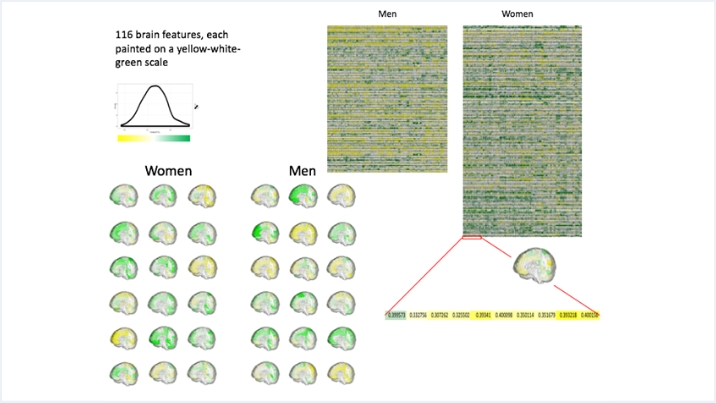

Are Brains Male or Female? / Prof. Daphna Joel
Are Brains Male or Female? / Prof. Daphna Joel
“Men and Women Use Brain Differently, Study Discovers.” This headline from the New York Times is but one reflection of the popular belief that the brains of women and men differ in significant ways, and that they surely work differently. Even results of scientific studies into gender differences in the brain are often reported in the same vein: ‘The brains of men are like this, those of women are like that.’ Such reports end up giving the impression that there are two types of brains – one typical of women and the other, of men.
The problem with this way of thinking is that it applies to the brain, often implicitly, the same logic that applies to the genitals. Most humans are born with either male-typical genital organs or female-typical ones, so scientists and laypeople alike tend to assume that this binary distinction into male and female is also true of brains. Yet a careful reading of studies into sex and gender differences in the brain suggests otherwise.
Let’s take, for instance, the size of the brain. The average brain of men is approximately 11% larger than the average brain of women, but if you take a woman and a man of the same height, their brains are likely to be the same size. Specific structures within the brain are also larger, on average, in men compared to women, but here too, these are mostly differences of size, not sex or gender. That is, when total brain volume is taken into account, the differences between the brains of men and women are small and few in number.
And if you compare large and small brains of individuals from the same sex category, you’re likely to find the same differences between them as between the brains of women and men. For example, large brains tend to have a higher proportion of white matter and a lower proportion of gray matter than small brains – and this is true of large and small brains of both women and men. (You can read more about this in Lise Eliot’s paper, or in its popular summary.)
Some scholars have argued that these small differences in specific brain features add up to a large difference between the brains of women and of men at the level of the whole brain. But my colleagues and I have shown, using several approaches, that this is not true.
In our first study, published in 2015, we analyzed the structure of over 1,400 human brains. We found that most brains are comprised of unique mosaics of features: some brain measures (volume of specific regions, for instance) appear in a form that is more common in women compared to men, others in a form that is more common in men compared to women, and still others in a form that is similarly common in women and men. In the tables below, you can see the analysis of volumes of 116 gray matter regions in the brains of men (left) and women (right). Each line represents the volume of these 116 regions in a single brain, and the color code marks the size of each region relative to the size of this region in all other brains (of women and men combined). Green stands for larger, yellow for smaller.
On the group level, you can easily see the difference in the proportion of gray matter mentioned above: there is relatively more of it in smaller brains, which is evident in more green on the women’s side and more yellow on the men’s. But you can also see that brains are rarely all green or all yellow. Rather, each brain is a unique combination of green (which is more common in women compared to men), yellow (which is more common in men compared to women), and white (which is similarly common in women and men).

In other words, what’s typical of human brains – that is, of both women and men – is to be composed of a mosaic of features. This is also true of human personalities. Each individual possesses a unique combination of feminine (i.e., more common in women compared to men) and masculine characteristics. (You can read more about the gender mosaic of personalities here).
Because brains are composed of mosaics of features, knowing that someone is female or male provides very little information about the structure of their brain and about how their brain is likely to compare to yours. In our studies, we showed that the chances of two people having the same brain architecture are hardly related to gender – that is, a woman and a man are nearly as likely to have the same brain architecture as two women or two men are. There are other lines of evidence supporting the conclusion that being female or male provides little information about one’s brain structure or function. You can read more about this in Gender Mosaic: Beyond the Myth of the Male and Female Brain.



